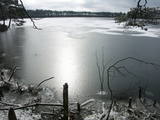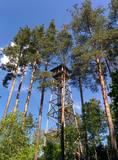| Nr | Nosaukums | Apraksts |
|---|---|---|
|
Kūku bode "Gardums" atrodas Gulbenes centrā. Piedāvājumā dažnedažādi konditorejas mājražojumi no dabīgām izejvielām, svaigi spiestas sulas, aromātiskas tējas un kafijas. Gardumā iespējams nobaudīt Gulbenes novada īpašos našķus un ēdienus. Bodes darbības pamatprincips ir "kā mājās cepts". Izmanto produktus mājas vistu olas, paši gatavo ievārījumus utt. Cik vien iespējams gatavojot izmanto dabīgus produktus. |
||
|
Saimniecībā notiek izglītojošās programmas, kuru laikā apmeklētāji tiek iepazīstināti ar saimniecībā dzīvojošajiem dzīvniekiem, to kopšanu un šķirņu izcelsmi. Apmeklētājiem ir iespēja pašiem savākt olas, iemācīties taisni sēdēt seglos un pajāt. |
||
|
Maršruts ved no Latvijas galvaspilsētas Rīgas, caur skaistajām lauku teritorijām uz Kauņu, kas ir otrā lielākā Lietuvas pilsēta. Klūgu ainavu dārzs un parks ir slavens ar begonijām. Dobeles dārzkopības institūtā ir vairāk nekā 200 ceriņu augu veidu un formu kolekcija. Skaisto un praktisko ideju dārzs lepojas ar savu skujkoku kolekciju, un viesiem piedāvā garšvielu pulverus, žāvētas ogas un augļus. "Rūķīšu tēja" ir viena no lielākajām Latvijas ārstniecības augu saimniecībām (audzē kliņģerītes, kumelītes utt.) Kroņaucē sezonas laikā baudiet peoniju skaistumu Andra Berkina kolekcijas dārzā un krāšņo Viestardu tulpju dārzu. Nākamā pietura atrodas zemnieku saimniecībā "Droši vesels", kas ražo augu izcelsmes ziedes un audzē dārzeņus. Apmeklējot Piparmētru namiņu, jūs varat izbaudīt piparmētru tēju, cepumus, medu ar piparmētrām un piparmētru sīrupus. Blankenfeldes muižā jūs varat aplūkot unikālo zvanu kolekciju un izbaudīt dabīgās sulas, sīrupus un marinētus gurķus, kas ražoti muižā. Joniškos apmeklējiet sarkano un balto Jonišku sinagogu, Sv. Jaunavas Marijas debesīs uzņemšanas baznīcu un Jonišku vēstures un kultūras muzeju. Jakiškiai muiža nav renovēta un saglabājusi autentiskus elementus, kā piemēram, krāsnis, slēģus, kāpnes, durvis. Baltijas Augu muzejā audzē aptuveni 30 dažādu sugu un šķirņu augus. Šauļu Botāniskajā dārzā izveidoti trīs seno augu dārzi atbilstoši lauku tradīcijām attiecīgajā periodā – pirmskara, starpkaru un pēckara. Burbišku muiža ar tās skaisto ainavu un skulptūru parku organizē ikgadējo tulpju festivālu. Kleboniškių lauku māju muzejā var aplūkot autentiskas Augštaitijas reģiona saimniecības. Baisogalas muižu sauc par karalisko, jo tā kādreiz piederēja Lietuvas lielhercogam, un tās 12 hektāru parks ir viens no skaistākajiem Lietuvā. Slavenā lietuviešu dzejnieka Mačiulis-Maironis muzejā ir divi skaisti kultūrvēsturiskie dārzi. Mājas ražotos "laimīgos ēdienus" var iegādāties no Garsi Tyla saimniecībā, un iespējams doties pastaigā to 100 gadu senajā augļu dārzā un apskatīt garšaugu dārzu. Lietuvas Dārzkopības institūts veic gan zinātniskās, gan eksperimentālās / ražošanas aktivitātes. Šeit varat nopirkt stādus, kā arī sezonas augļus un dārzeņus. Tadas Ivanauskas saimniecībā pie Obelynes parka jūs redzēsiet 300 sugu un augu šķirņu kolekciju, ieskaitot vecāko koku divdaivu ginku. Kauņā Lietuvā varat apskatīt vecāko ābeli - gandrīz 360 gadus senu, 8 metrus garu, 285 cm diametrā ap 1.3 metru augstumā. Vytautas Dižā Universitātes Kauņas Botāniskais dārzā aug unikāli augi, ierīkota lielākā oranžērija Lietuvā, senie Lietuvas puķu dobju augi tiek demonstrēti dažādās augu kopās atbilstoši botāniskajai klasifikācijai. Maršruts beidzas Kauņā, kas bija Lietuvas galvaspilsēta no 1920. gada līdz 1939. gadam. |
||
|
Pavāru māja atrodas bijušajā Līgatnes Dzemdību namā "Wilhelma". Tā ir iecerēta kā vieta, kur pavāriem, kā arī citiem interesentiem darīt, radīt un eksperimentēt. Idejas autors ir šefpavārs Ēriks Dreibants. Šīs vietas mērķis ir iedrošināt izzināt un atklāt mūsu reģionam raksturīgas unikālas garšas un pieredzi. Pavāru māja atbalsta slow food filozofiju un apkārtnes zemniekus un ražotājus. Līdzās mājai atrodas Dabas vērotāju dārzs, kurā atrodams gan rotaļu laukums "Ligzda kokā", gan palielināmais stikls dabas elementu tuvākai aplūkošanai, gan piknika zona ar ugunskura vietu. Dārzā ierīkots garšaugu dārzs, sastādīti augļkoki un ogu krūmi, bet tā centrā līdzās Putnu vērošanas laukumam izveidota Tauriņu pļava.
|
||
|
Relatīvi grūti pieejama un cilvēka mazskarta teritorija kūdrā izstrādātajā Cenas tīreļa ziemeļaustrumu daļā, kur saglabājušies augstā purva biotopi ar purva ezeriem, kas kopumā veido nozīmīgu vietu ligzdojošām un migrējošām zosveidīgo, tārtiņveidīgo u.c. putnu sugām. Teritorija nav piemērota (un nav vēlams) tūrisma aktivitātēm.
|
||
|
Mājīgajā restorānā var nogaršot no lietuviešu dabas veltēm gatavotos ēdienus. Šeit var arī apbrīnot seno ēdienu gatavošanas darbarīku un šakoša cepšanas rīku ekspozīciju. Tiem, kas paši vēlas izcept tradicionālo šakoti, piedāvā pieteikt izglītojošo programmu „Šakoša paraugcepšana”. Maiznīca atrodas ~4 km attālumā no Druskininku pilsētas. Piedāvā nakšņošanu, konferenču telpas un kulinārā mantojuma programmas. |
||
|
Kafejnīca "Galdiņ, Klājies!" atrodas Laucienē, 12 km no Talsiem. Ģimenes restorāns, kur iespējams nobaudīt tradicionālu Latvijas virtuvi. |
||
|
Netālu no "Žagarkalna" slēpošanas bāzes Cēsīs, Gaujas krastā izveidota telšu un treileru kempingu un ūdenstūristu bāze. Kempinga teritorija ir pietiekami plaša, lai tūristi viens otru netraucētu. Kempings atrodas upes krastā. Žagarkalna kempings piekopj “klusā kempinga” principu. Tas nozīmē, ka šeit ikdienā ir aizliegts atskaņot mūziku, pārmērīgi trokšņot vai kompānijā skaļi uzvesties. Atpūtnieki tiek aicināti netraucēt pārējos apmeklētājus, kas ir atbraukuši baudīt dabu un Gaujas Nacionālā parka mieru. Pieejama atsevišķa ģimenes mājiņa ar pirti. Kempings Žagarkalns piedāvā laivu, plostu, sup dēļus un velosipēdu nomu. Kempings ir atvērts no 15.maija līdz 15.septembrim. |
||
|
This ancient Courlandian castle hill has remnants of an ancient city. Historical sources indicate that in 1263, the Courlandians handed the castle over to the Livonian Order without a battle and that the castle was then burned down. The name of the place, Skābaržkalns, has to do with the name of the city, because hornbeam trees in the area were once known as grobi. |
||
|
Uzcelts apkaimes augstākajā vietā – Ančupānu meža kalnā, kuru vietējie dēvē par „Bāku”. No 26 m augstā torņa redzama ļoti plaša panorāma ar Rēzeknes pilsētas namiem, baznīcu torņiem un apkaimes mežu masīviem, kas mijas ar lauksaimniecībā izmantojamām zemēm. Blakus tornim – atpūtas vieta. |
||
|
The German order built a stone castle here in 1242, and only a few fragments of it remain along with a vaulted cellar in which local wines can be tasted if you register in advance. The castle of the Duke of Courland was here later, but it was destroyed during the Great Northern War in 1701. Reconstruction of the park involved wooden pathways and bridges, information stands, a pergola and a fountain. There are 22 sculptures in the park that are the work of Līvija Razevska. |
||
|
For many years, Kaali tavern has offered the best Estonian and Saaremaa dishes and drinks from local ingredients, as well as introduced guests to the history and culture of the island. Visitors of Kaali meteorite crater and museum can enjoy a delicious meal here. |
||
|
Built around 1625. For several centuries it was the main worship place for the Suiti community, supporting the community's spirituality and identity. In 1882 the church was expanded into the form of a cross that is seen today. Inside the church you can see work done by the Dutch wood carver Johann Mertens around 1715. The organ was built by F. Weisenborn in Jēkabpils in 1893, and the altar painting dates back to 1910. The bricked graveyard of the Schwerin dynasty is under the church. Contact it in advance if you wish to see its interior. |
||
|
Atrodas Tirgoņu un Zāļu ielas krustojumā (Zāļu ielā 12). Interesanta ar faktu, ka šī ir vienīgā padomju laikā uzbūvētā (1948. g., pēc citiem avotiem – šajā gadā atjaunota) Latvijas baznīca. |
||
|
Atrodas 200 m ziemeļaustrumos no akmens tilta pār Tebru. Ūdensdzirnavu komplekss celts 18. gs. beigās – 19. gs. sākumā uz Tebras upītes, uzpludinot Dzirnavdīķi. Blakus dzirnavām atrodas 19. gs. beigās celtā Aizputes muižas alusdarītava, apvienojot divas vecākas Pilsmuižas saimniecības ēkas. |
||
|
Truly delicious apple juice. Organic farm of apple and sea buckthorn. Visitors can view farms, gardens, production facilities and equipment, as well as taste and buy juices. |
||
|
Lēdurgas dendroparks ir viens no bagātākajiem parkiem Latvijā. Parkā var iepazīt vairāk kā 1000 koku un krūmu sugas, pasugas un varietātes. Gadu gaitā Lēdurgas dendroparks kļuvis par dabas un kultūrvēsturisku aizsargājamu objektu. Piedāvājumā - skuju un lapu koki, dekoratīvie un ogu krūmi, vīteņaugi, ziemcietes, tējas augi u.c. |
||
|
Guided wilderness experience day-trip combines bog shoeing and canoeing. First is walking through the forest and reaching the largest peat-bog in Estonia – Kuresoo. Wear bogshoes and walk on the wild landscape, followed by wilderness lunch. The trip ends with a relaxing canoe trip along Soomaa meandering rivers. |
||
|
The Rumbula airfield was originally a military facility, established after World War II at a place where many single family farms had been before. When the Spilve airfield shut down, civilian aircraft moved to Rumbula, while military aircraft were based at the Rīga airport. Today the world “Rumbula” is most often associated with the automobile and spare parts market that has been established on part of the former airport’s territory. A certain “heritage” at the site is pollution from the former airfield’s fuel containers, where petroleum was stored. Paragliding occurs at the airfield.
|
||
|
Nepilnus 3 km garā taka iepazīstina ar dziļo Imulas ieleju – Abavas kreisā krasta pieteku. Īpaši iespaidīga ieleja izskatās bezlapu periodā, kad ir apjaušami tās izmēri un formas. Viens no takas iespaidīgākajiem objektiem ir Buses jeb Matkules pilskalns. Apskatāmi citi objekti – Baznīckalns, Bedrīšakmens, Ķauķa kalns ar avotiņu. Atrodas dabas parkā „Abavas senleja”. |
||

























